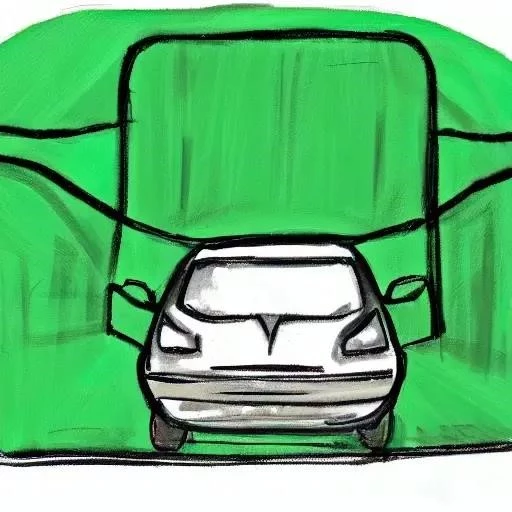
There’s nothing quite like the dread of a sweltering summer drive, your car’s air conditioning sputtering out nothing but lukewarm air. It’s a common automotive grievance, transforming what should be a comfortable journey into a sticky, frustrating ordeal. Many drivers, envisioning hours of workshop time and significant expense, postpone addressing this crucial issue. However, what if we told you that restoring your vehicle’s icy blast is often a surprisingly swift and straightforward process? The answer to the perennial question, “how long does it take to regas a car aircon?” might just put your mind at ease and your car back on the road to cool comfort faster than you ever imagined.
Beyond the immediate relief from oppressive heat, a properly functioning air conditioning system is an integral component of modern vehicle comfort and even safety. It aids in demisting windows during humid conditions, significantly reduces driver fatigue on long journeys, and contributes to the overall resale value of your car. Postponing necessary maintenance, especially when faced with a noticeable decline in cooling performance, can unfortunately lead to more extensive and costly repairs down the line. Thankfully, the essential service of regassing your car’s AC system is remarkably efficient, a testament to advancements in automotive service technology and the skill of trained professionals.
Here’s a quick overview of what you can expect when getting your car’s AC system regassed:
| Aspect of AC Regassing | Key Details | Why It Matters |
|---|---|---|
| Typical Duration | Generally ranges from 45 minutes to 1.5 hours, depending on system complexity and any detected issues. | Provides a clear expectation for planning your visit; highlights the efficiency of the process. |
| Cost Range | Varies based on region, workshop, and refrigerant type (e.g., R-134a vs. R-1234yf), typically between $100-$300. | Helps drivers budget effectively and understand the value of professional service. |
| What’s Included | Refrigerant evacuation, leak detection (often with UV dye), vacuum test, new oil and refrigerant refill to manufacturer specifications. | Ensures a comprehensive service, addressing potential underlying issues, not just a temporary fix. |
| Why It’s Necessary | Refrigerant naturally depletes over time (approximately 10-15% per year) and small leaks can accelerate this. | Explains the science behind the need for regassing, promoting proactive maintenance. |
| Recommended Frequency | Most manufacturers and experts recommend an AC service every 2-3 years, or immediately if cooling performance drops. | Guides drivers on optimal maintenance intervals for peak performance and longevity. |
| For more detailed automotive maintenance guides, visit: AAA Car Care | ||
The Mechanics of Rapid Restoration
So, exactly how long does it take to regas a car aircon? For most vehicles with a system that’s simply low on refrigerant and free of major leaks, the entire process can be completed within 45 minutes to an hour and a half. This surprisingly swift turnaround is largely thanks to sophisticated, automated AC service machines that meticulously handle the evacuation, vacuum testing, and refilling processes with impressive precision. These advanced units efficiently recover old refrigerant, vacuum the system to remove moisture and contaminants, perform a critical leak test, and then inject the correct amount of fresh refrigerant and lubricating oil.
Industry experts, like seasoned technicians at Bosch Car Service centers, consistently emphasize that the primary determinant of service duration isn’t the refill itself, but rather the crucial diagnostic steps preceding it. A thorough inspection for leaks is paramount; simply topping up a leaking system is a temporary fix, wasteful, and environmentally irresponsible. By integrating insights from advanced leak detection technologies, including UV dye and electronic sniffers, technicians can pinpoint issues rapidly, ensuring that the regas provides a lasting solution rather than a fleeting moment of relief. This diagnostic phase, while adding a few minutes, is incredibly effective in guaranteeing the integrity of your AC system.
Beyond the Refresh: Proactive Care for Peak Performance
The forward-looking approach to car maintenance isn’t just about fixing problems when they arise, but preventing them. Regularly checking your car’s AC system, even if it seems to be working acceptably, can save you from future headaches and potentially more expensive repairs. Consider your car’s AC system akin to your home refrigerator; it’s a closed loop, but not entirely impervious to the gradual loss of its working fluid. Over time, minuscule amounts of refrigerant can escape through seals and hoses, leading to a noticeable drop in cooling power. Proactive regassing, particularly every two to three years as recommended by many manufacturers, ensures that your system always operates at peak efficiency.
Moreover, the type of refrigerant your car uses can also subtly influence the service process. Older vehicles typically use R-134a, while newer models increasingly employ R-1234yf, a more environmentally friendly but often more expensive gas. Technicians are equipped with specialized tools for both, ensuring that your specific vehicle receives the correct, compliant service. This commitment to using appropriate materials and techniques underscores a professional workshop’s dedication to quality and environmental stewardship.
